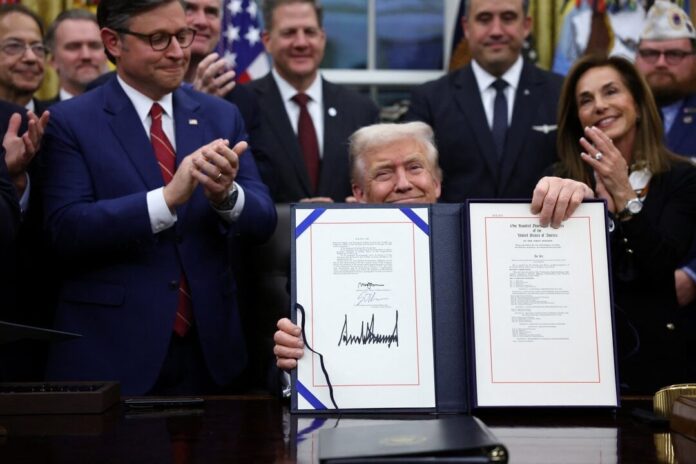
President Donald Trump on Wednesday signed legislation officially ending the longest government shutdown in U.S. history, concluding a 43-day standoff that had paralyzed federal operations, disrupted essential services, and left hundreds of thousands of federal workers without pay.
The House of Representatives voted 222–209 to pass the funding package just two hours before Trump’s signature sealed the deal. The legislation, which cleared the Senate earlier in the week, will restore funding through January 30 and bring government employees back to work as early as Thursday.
However, the pace at which federal services fully resume remains uncertain.
The shutdown’s resolution means the return of food assistance programs, the reinstatement of pay for furloughed federal employees, and the revival of critical air traffic control systems ahead of the busy Thanksgiving travel season.
It also allows key federal agencies to resume the release of economic data, vital for investors, policymakers, and analysts assessing U.S. growth and inflation trends.
Economists estimate that the shutdown reduced gross domestic product (GDP) by more than a tenth of a percentage point for each of the six weeks it lasted.
While most of the lost output is expected to be recovered in the coming months, the White House confirmed that some October economic reports, including jobs and inflation data, may never be released.
“This felt like living in a Seinfeld episode,” said Republican Representative David Schweikert of Arizona. “We just spent 40 days and I still don’t know what the plotline was.” He added, “What’s happened now when rage is policy?”
Despite the breakthrough, deep partisan divisions persist. Democrats criticized the agreement for excluding an extension of federal health insurance subsidies set to expire at year’s end.
Although the Senate is expected to revisit the issue in December, House Speaker Mike Johnson has made no such commitment.
Democratic Representative Mikie Sherrill, who is resigning next week after being elected governor of New Jersey, urged colleagues to oppose what she called capitulation to the Trump administration.
“Do not let this body become a ceremonial red stamp for an administration that takes food away from children and rips away healthcare,” she said in her farewell address.
A Reuters/Ipsos poll released Wednesday showed Americans evenly divided over who was to blame for the shutdown: 50% blamed Republicans, while 47% faulted Democrats, highlighting the political stalemate’s broad disapproval.
The legislation also includes a controversial provision allowing eight Republican senators to seek damages over alleged privacy violations tied to the Justice Department’s investigation of the January 6, 2021, Capitol riot.
It retroactively bans the collection of senators’ phone data without disclosure and authorizes lawsuits of up to $500,000 per violation.
As Congress returns to full session, lawmakers are expected to confront other contentious issues, including the release of unclassified records related to the late financier Jeffrey Epstein, a move likely to test the fragile truce achieved by ending the shutdown.
For now, however, the reopening of government offers relief to millions of Americans and a brief respite in Washington’s long-running political battles.
Source: Reuters
Written By Rodney Mbua


















